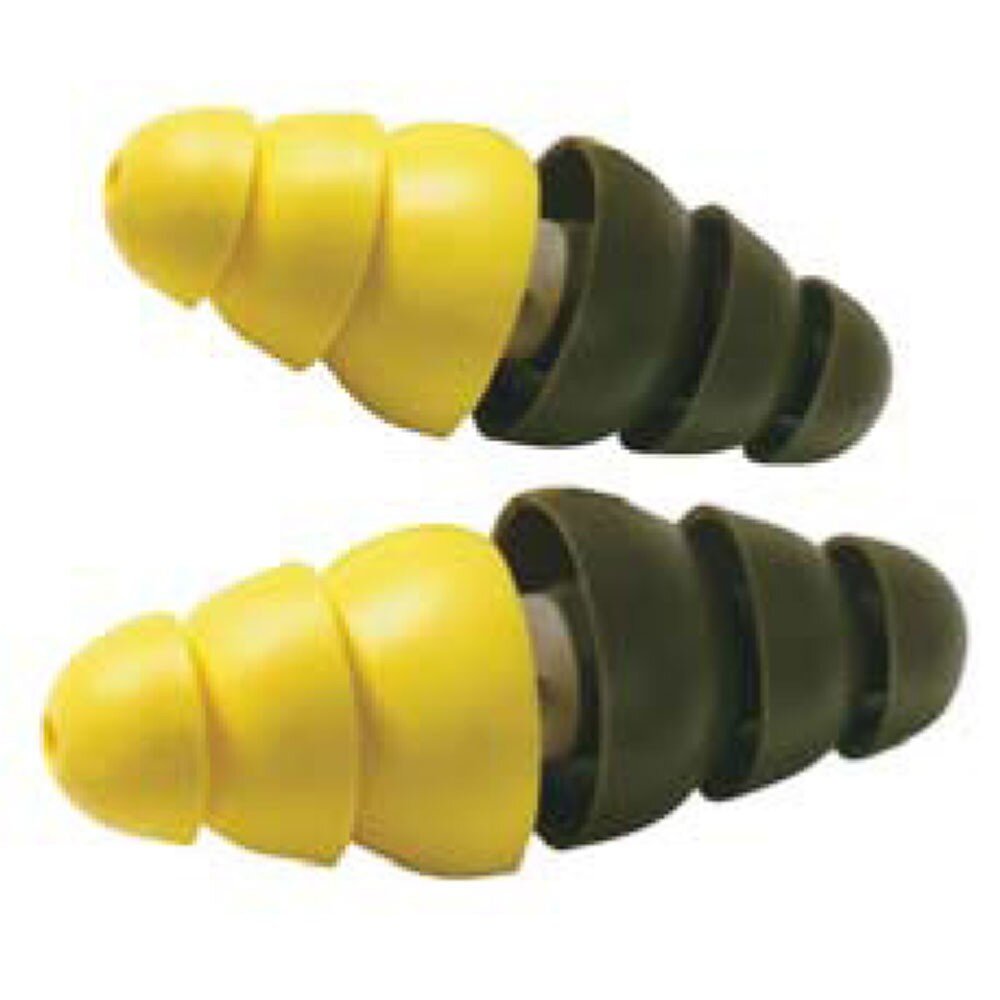3M Dual-Ended Combat Arms Earplug Litigation
In recent months, you’ve probably heard something about a lawsuit against the company 3M, manufacturers of the 3M Dual-Ended Combat Arms Earplugs. But what, exactly, is going on? If you served in the military or as a civilian contractor for the military between 2002 and 2016, you might just have a claim. Read on to learn about the lawsuit and see if you might qualify (or, if you want to skip to our Evaluation Form, just scroll down to the bottom of this page).
The Earplugs
Around the year 2000, 3M (the relevant complaints name multiple defendants, but for ease of reference, I use “3M” to refer to all of the defendants) developed a dual-ended earplug design. That design eventually became the 3M Dual-Ended Combat Arms Earplug. Broadly speaking, the closed position was supposed to be used to block out noise and the open position was intended to filter out a substantial amount of noise yet still allow the user to hear orders and otherwise engage in conversation with those nearby.
In 2002, 3M obtained a contract to supply the military with this earplug. However, the company appears to have hidden certain defects and made what are now known to be serious misrepresentations about the effectiveness of the earplugs in order to get this contract. Most crucially, the earplugs tended not to fit and seal properly, and they were much less effective at blocking sound than 3M claimed. This earplug was the exclusive dual-ended earplug of the military from 2003 until 2015.
Disclosure of Defects and Lawsuits
3M’s misdeeds became public following a whistleblower suit concerning the earplug’s development and false marketing. This led to the filing of lawsuits by some former users, primarily U.S. Military Veterans.
Some of Plaintiffs’ material allegations are
The earplugs were defectively designed, preventing users from getting a proper fit and seal.
The defective design of the earplug caused the device to loosen imperceptibly in Plaintiffs’ ear canals.
Despite being aware of the defects as early as 2000, 3M represented the earplugs as more effective than they actually were for almost a decade and a half.
3M distorted scientific sources in the course of marketing, advertising, and promoting the earplugs.
3M’s acts constituted a continuing fraud that rendered it impossible for users to become aware of the earplug’s defects.
Discovery and motions in this case are ongoing, and more servicemembers and veterans file cases each day. The first bellwether trial is scheduled to take place in early 2021.
Compensation and Eligibility
Users of the earplugs might be entitled to:
Compensation for past and future medical expenses, such as doctor visits, prescriptions, and hearing aids;
Compensation for past and future loss of income;
Compensation for pain and suffering, emotional distress, and loss of enjoyment of life due to hearing problems; and
Punitive damages to punish 3M for its years of misconduct.
By this point, here’s what you’re probably asking yourself: “Do I qualify for this lawsuit?”
If the answer to the following three questions is “Yes”, you might have a claim:
Did you serve in the U.S. military, as a servicemember or civilian contractor, at some point between 2002 and 2016?
Did you use the CombatArms™ earplug (Version 2 CAEv.2) (“Dual-Ended Combat Arms Earplug”) during that time?
Have you suffered from hearing loss, tinnitus, or ringing in the ears?
If the answer to all three of the above questions is “Yes”, then you might have a claim. Call (NUMBER), email us, or fill out our online form below for a consultation.
A Few Final Points
Finally, I’ll address some misconceptions and questions that people seem to have:
The Dual-Ended Combat Arms Earplugs were the only dual-sided earplugs issued by the military to servicemembers between 2003 and 2015. So if the military gave you dual-sided earplugs between 2003 and 2015, you received the earplugs that are the focus of these lawsuits.
You do not have to have deployed or served in a a war zone to qualify. These earplugs were issued to servicemembers across the globe, including National Guard members, Reservists, and those on domestic bases, not just those deployed into combat zones.
Many veterans who receive VA disability benefits for hearing problems are worried that any funds they receive through this suit will affect those benefits. This is not true.
Win or lose, participating in this litigation costs you nothing. These cases are taken on contingency. All expenses of litigation are advanced by the plaintiffs’ attorneys, and we are only paid if you obtain a settlement or verdict in your favor.
You do not need to still have the earplugs in your possession to qualify as a plaintiff.
Whether you received a VA rating or other medical diagnosis for any of the listed hearing issues is not decisive. In other words, if you’ve experienced any of the listed hearing problems, you could be eligible even if your problem has not previously been formally diagnosed.
This case is an MDL, not a class action. Accordingly, each individual plaintiff has their own case with their own case number and the option of continuing their case and going to trial if they do not receive an acceptable settlement offer. Plaintiffs have more control over how to resolve their individual claims than plaintiffs in class actions and, if they go to trial, will have the benefit of the common discovery obtained in the case.
And here’s what might be the big one…
The whistleblower suit was settled for $9.1 million in 2018. Many people seem to think that this is a compensation fund that will be divided by all veterans who make a claim. THIS IS NOT TRUE. The $9.1 million settlement was between the government, the whistleblower, and 3M. The suits that are currently ongoing are between users of the earplugs and 3M, and any settlement that might take place is separate from the 2018 settlement.
Conclusion
If you think you might be eligible, contact our office by phone, email, or our online form located below.


